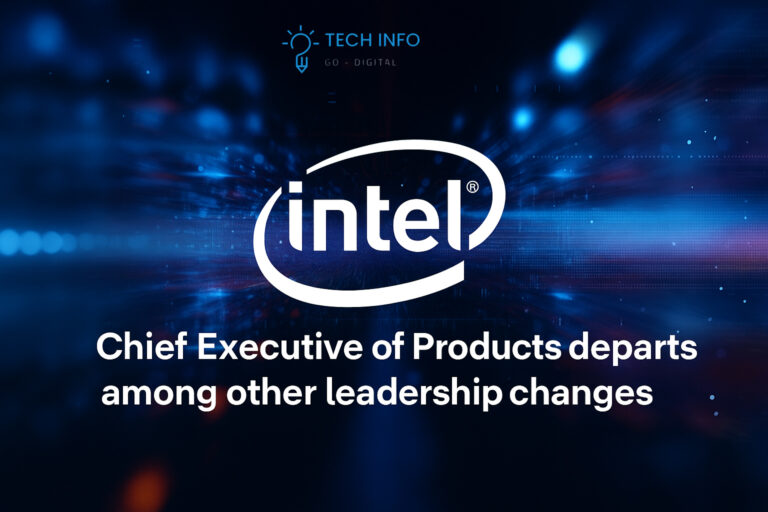Table of Contents
ToggleIntel’s Bold Restructuring: A New Chapter Begins

Intel is embarking on one of the most significant leadership reorganizations it has seen in years as the chipmaker fights to reclaim its industry-leading status. On September 8, 2025, Intel announced sweeping management changes under its new CEO, Lip-Bu Tan, including the departure of long-time executive Michelle Johnston Holthaus, as companies continue to face intense competition and pressure to innovate
Departing a Veteran: Michelle Johnston Holthaus

Michelle Johnston Holthaus’s exit marks the end of an era. A three-decade veteran of Intel, Holthaus most recently served as Chief Executive Officer of Intel Products, overseeing pivotal business segments like client computing, AI, and data center technologies. She also served as interim co-CEO following the departure of Pat Gelsinger, underscoring her depth of experience and influence within the company
Intel has stated that Holthaus will stay on as a strategic adviser for a limited time—SiliconANGLE mentions through March 2026—to facilitate a smooth transition The SEC filing reinforces this timeline, indicating her departure is effective March 1, 2026, accompanied by severance benefits per company policies
A Strategic Shake-Up: New Leaders Rise
As Holthaus transitions out, several new and elevated leaders step into critical roles. These appointments indicate a deliberate restructuring under Tan’s leadership, designed to centralize control and drive engineering excellence.
Srinivasan “Srini” Iyengar — Central Engineering Group SVP
Intel is launching a Central Engineering Group aimed at unifying its engineering efforts and spearheading a new custom silicon business for external clients. Srini Iyengar, who joined from Cadence Design Systems, brings deep expertise in silicon engineering, especially for hyperscale data center workloads
Jim Johnson — SVP & GM, Client Computing Group

After serving as interim leader, Jim Johnson, a 40-year Intel veteran, is now officially heading the Client Computing Group. His extensive experience across Intel’s internal teams and global operations makes him a stabilizing choice during this leadership shift. He will oversee Intel’s PC and edge strategies—especially critical as Intel readies its next-gen products such as “Panther Lake” and the 18A manufacturing process .
Naga Chandrasekaran — Expanded Role in Foundry Services
Already leading Intel Foundry as EVP and CTOO, Naga Chandrasekaran will now oversee Foundry Services too, integrating manufacturing and service offerings to better deliver value to customers.
Why Now? Tan’s Vision for a Leaner, Engineering-Driven Intel
These changes underscore CEO Lip-Bu Tan’s strategy: flatten the organization, bring key business units in direct alignment under his leadership, and refocus the company on core strengths.
Intel has grappled with operational inefficiencies and strategic drift in recent years. Gelsinger’s tenure ended with board dissatisfaction and disappointing financial returns, resulting in leadership instability. Now, under Tan—appointed in March 2025—the company is aggressively restructuring, spinning down non-core units, upping workforce cuts, and refocusing on its foundational businesses
Flat reporting lines, faster decision-making, and fresh leadership across hardware, fab services, and custom silicon are clear signs of a strategic reboot.
What This Means for Intel’s Future
- Leadership Consolidation: Key group heads—Kechichian, Johnson, Iyengar, and Chandrasekaran—report directly to Tan, reducing layers and likely enabling faster responses to competitive pressures.
- Engineering as Core: The emphasis on a Central Engineering Group and integrated Foundry Services signals a return to Intel’s roots as both a design and manufacturing powerhouse.
- External Business Push: The focus on building custom silicon for external clients indicates Intel’s intention to rival industry trends and create revenue outside its traditional PC and server markets.
- Transition Without Disruption: Retaining Holthaus through early 2026 ensures continuity even amidst significant change, balancing respect for legacy with urgency for transformation.
Broader Context: Intel at a Crossroads
Intel is undergoing pivotal change. . Competitors like AMD, Nvidia, and ARM dominate in AI, data center, and external partnerships, areas where Intel is looking to rebuild its relevance
Final Thoughts
Intel’s announcement on September 8, 2025 marks more than just a personnel update—it’s a bold manifesto. From Michelle Johnston Holthaus’s departure to the installation of new leaders in critical areas, the company is signaling a pivot to leaner, more responsive operations with an engineering-first culture.
The genius of this strategy lies in its combination: fresh perspective (Kechichian, Iyengar), veteran steadiness (Johnson, Chandrasekaran), and careful transition (Holthaus advising). Now, every eye will be on whether Intel can convert this momentum into market leadership—or at least, back to competitive parity.
.





